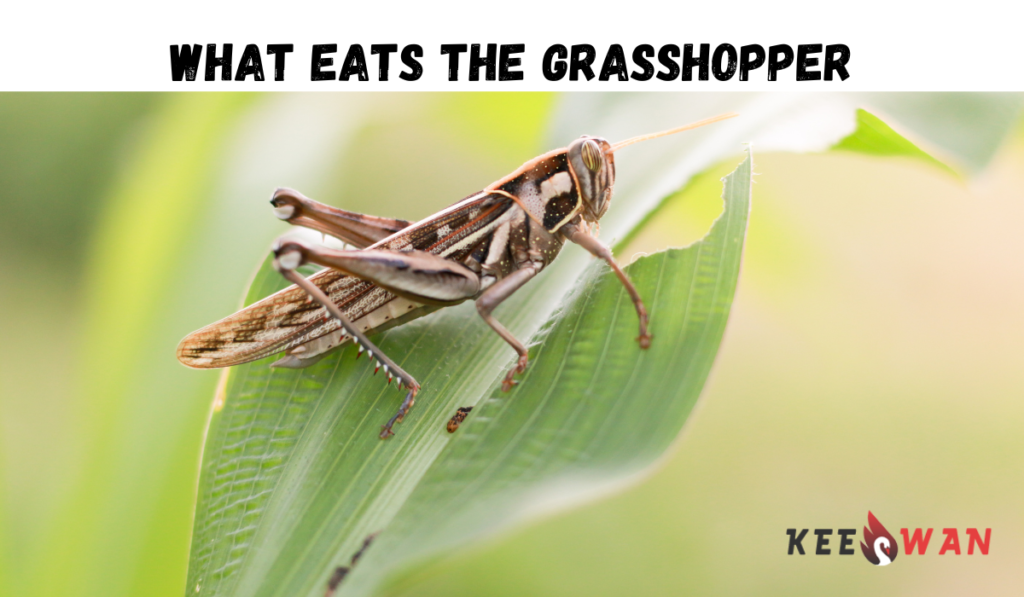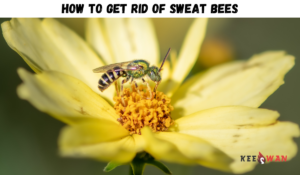Introduction
Grasshoppers, with their distinctive jumping abilities and vibrant appearances, are a common sight in various ecosystems around the world. These insects play a significant role in the food chain as both herbivores and prey. In this article, we’ll delve into the fascinating world of grasshopper predators and explore the diverse range of creatures that consider these hopping insects a delectable meal.
The Role of Grasshoppers in Ecosystems
Grasshoppers are primarily known as herbivores, feeding on a variety of plants, including crops and wild vegetation. Their feeding habits make them a vital component of ecosystems, contributing to plant population control and nutrient cycling.
Natural Enemies of Grasshoppers
Birds: Aerial Predators
Birds, especially those with sharp beaks and keen eyesight, are among the most prominent predators of grasshoppers. Raptors like hawks and kestrels rely on their ability to spot movement from high above to catch these insects mid-air. They play a crucial role in maintaining grasshopper populations in check.
Reptiles: Ground Predators
Lizards and certain snake species are ground-based predators that stealthily hunt grasshoppers. Their agility and swift strikes make them effective in catching unsuspecting grasshoppers as they hop through the vegetation.
Small Mammals: An Opportunistic Feast
Small mammals such as shrews, mice, and bats also consider grasshoppers a tasty meal. These creatures are known for their opportunistic feeding habits, and grasshoppers provide them with a readily available food source, especially during warmer months when grasshopper populations are at their peak.
Arachnids: Silent Stalkers
Spiders, with their intricate webs and stealthy movements, are skilled predators that capture grasshoppers by ensnaring them in their silk traps. These ambush predators patiently wait for a grasshopper to wander into their web before striking with precision.
Insects: Intricacies of Cannibalism
Intriguingly, grasshoppers are not immune to cannibalism. In certain conditions, when resources are scarce, grasshoppers may turn to consuming their own kind. This phenomenon highlights the adaptability of these insects in challenging environments.
Conservation Considerations
While grasshopper predators are essential for maintaining balance in ecosystems, certain agricultural practices, such as excessive pesticide use, can harm these natural predator-prey relationships. It’s crucial to find sustainable solutions that minimize the impact on both grasshoppers and their predators.
Conclusion
The world of grasshopper predators is a complex web of interactions that showcases the delicate balance of nature. From aerial hunters to ground stalkers, these creatures contribute to the intricate tapestry of life on Earth. Understanding the role of grasshopper predators not only enriches our knowledge of the natural world but also underscores the importance of preserving these relationships for the health of ecosystems.
FAQs (Frequently Asked Questions)
Q1: Do grasshoppers have any defense mechanisms against their predators?
Yes, grasshoppers have several defense mechanisms against predators. Some of these include:
- Camouflage: Many grasshopper species have coloration that helps them blend into their surroundings, making it difficult for predators to spot them.
- Jumping: Grasshoppers are known for their powerful hind legs that allow them to make quick and unpredictable jumps to escape predators.
- Chemical Defense: Some grasshoppers can secrete or exude toxic substances that deter predators from attacking them. These substances might be foul-tasting or even harmful.
- Distraction Displays: Grasshoppers might engage in behaviors like flashing their wings or making sudden movements to distract or startle potential predators, giving them a chance to escape.
Q2: Are there any other insects that exhibit cannibalistic behavior?
Yes, cannibalistic behavior is observed in various insect species. Examples include praying mantises, where females often consume males after mating, and certain types of beetles, ants, and spiders that may eat their own kind under specific circumstances.
Q3: How do spiders ensure the grasshoppers they capture don’t escape?
Spiders capture grasshoppers and other prey using silk threads to create intricate webs or traps. Once a grasshopper is caught in a spider’s web, it can become entangled and immobilized. Spiders then approach the prey and inject them with digestive enzymes that liquefy the internal organs. The spider then sucks up the liquefied prey, leaving behind only the indigestible parts like exoskeletons.
Q4: Are grasshoppers found in all parts of the world?
Grasshoppers are found on every continent except Antarctica. They are more diverse and abundant in warmer regions, but they can be found in various habitats around the world, including grasslands, forests, deserts, and agricultural areas.
Q5: What can be done to promote the coexistence of grasshoppers and their predators in agricultural areas?
To promote the coexistence of grasshoppers and their predators in agricultural areas, several strategies can be employed:
- Maintaining Biodiversity: Encouraging a diverse range of plant species can attract a variety of insects, including predators that naturally keep grasshopper populations in check.
- Habitat Management: Creating suitable habitats for natural enemies of grasshoppers, such as providing shelter and food resources, can encourage their presence in the agricultural landscape.
- Biological Control: Introducing or conserving natural predators of grasshoppers, such as birds, spiders, parasitoid wasps, and predatory insects, can help control grasshopper populations.
- Reduced Chemical Use: Minimizing the use of broad-spectrum insecticides can preserve the natural enemies of grasshoppers, preventing unintended harm to beneficial species.
- Crop Rotation and Monitoring: Implementing crop rotation and regular monitoring can help identify grasshopper outbreaks early, allowing for targeted interventions.
These approaches aim to strike a balance between managing grasshopper populations and supporting the broader ecosystem in agricultural areas.
Important Terms:
What eats grasshoppers: Various predators including birds, mammals, and reptiles feed on grasshoppers, contributing to the ecological balance of their ecosystem.
What eats the grasshopper: Predators like birds (such as sparrows, swallows, and starlings), mammals (like shrews, mice, and bats), and insects (like spiders and mantises) consume grasshoppers as a vital part of their diet.
Birds that eat grasshoppers: Many bird species including sparrows, starlings, swallows, and certain songbirds incorporate grasshoppers into their diet due to their high protein content.
Do birds eat grasshoppers: Yes, many bird species do consume grasshoppers as a source of nutrition, especially during breeding seasons when they require more energy for raising their young.
Animals that eat grasshoppers: In addition to birds, other animals such as small mammals (shrews, mice), reptiles (lizards, certain snakes), and insects (spiders, mantises) are known to prey upon grasshoppers.
Grasshopper predators: Creatures like birds, rodents, amphibians, certain insects, and even some larger arachnids are natural predators of grasshoppers, helping to control their population.
What eats a grasshopper: Predatory animals such as birds, small mammals, reptiles, and insects, including specific species like blue jays, shrews, frogs, and praying mantises, feed on individual grasshoppers.
Animals that eat grasshoppers: A variety of creatures like birds (such as robins, quails), small mammals (like voles, moles), reptiles (including some geckos), and predatory insects (like dragonflies) are known to consume grasshoppers.
Birds that eat grasshoppers: Numerous bird species including sparrows, blackbirds, warblers, and cuckoos, rely on grasshoppers as a key component of their diet.
Predators of grasshoppers: Various animals including birds, bats, frogs, toads, rodents, and certain insects are recognized as natural predators of grasshoppers, helping to manage their populations within ecosystems.
What eats crickets and grasshoppers: Predators like birds (robins, crows), small mammals (mice, shrews), amphibians (frogs, toads), and insects (praying mantises, beetles) consider crickets and grasshoppers as part of their dietary intake.





